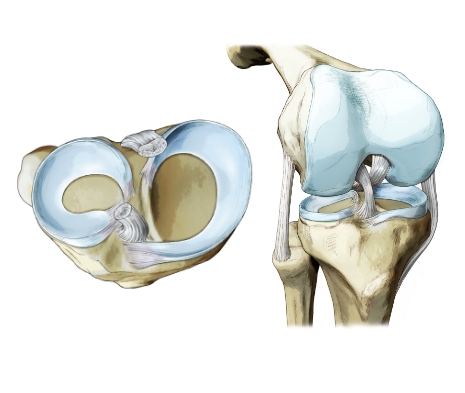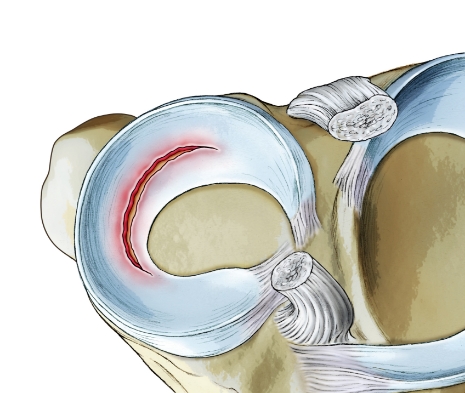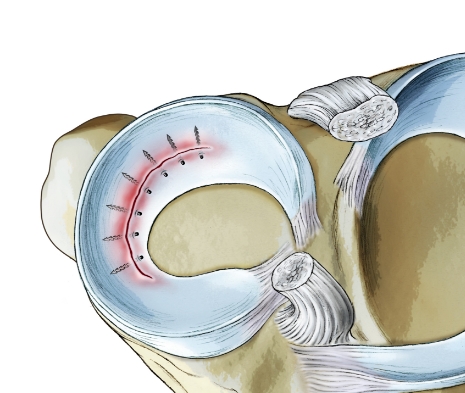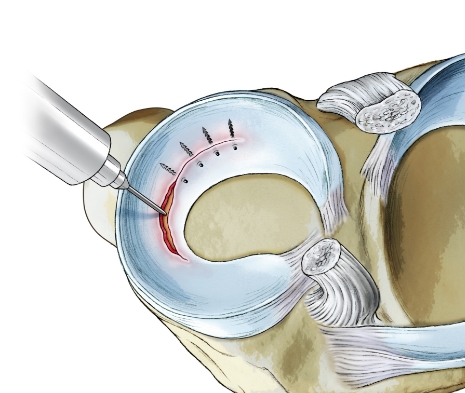Meniscal
Repair
The meniscus is the "shock absorber" of the knee joint. It comprises a figure 8 shaped tissue between the end of the bones and serves to spread and absorb the high loads and stresses that are produced through the joint during normal; motion, and especially stair climbing, running and other exercise.

The meniscus is often described as having three zones: the red, red-white and white zones, which are differentiated, based on the amount of blood supply that they receive. The white zone has essentially no blood supply, and conversely the red zone has a plentiful supply. The red-white zone is somewhat intermediate.
Tears are caused by excessive load or degeneration and can occur anywhere in the meniscus. They are typically classified by their positioning and shape e.g. vertical, horizontal, complex etc.

In the same way as for the tendons of the rotator cuff, those tears that occur in the white zone of the meniscus (i.e. with no blood supply) do not spontaneously heal and can cause significant pain and morbidity. Physical therapy to increase muscle strength and help to stabilize the joint can be effective in some cases, but surgery is frequently indicated.

For some very simple (often vertical) tears, repair is possible through the surgical use of sutures or tacks, which simply hold the edges of the tear together. Alternatively, allograft menisci can be used to totally replace the affected tissue, although size matching and tissue quality have often been cited as reasons for success. The number of high quality allograft menisci remains insufficient to treat any but a small fraction of the overall need.
The only other surgical option remains a partial or full meniscectomy, in which either the injured area or the entire meniscus is surgically removed. It clearly follows that such procedures will change the pattern of loading through the joint, and also deprive the joint of its major shock absorber. For this reason, both partial and full meniscectomy have been well documented to initiate degenerative changes in the joint, leading to osteoarthritis.
Meniscus injury is very common, and results in approximately 1,200,000 surgeries in US alone each year. The vast majority of these surgical procedures (c. 880,000) involve meniscectomy, with a minority (under 350,000) being repaired and only about 1% involving a meniscal replacement.

It is therefore clear that a product with the ability to reduce the number of meniscectomy procedures will have long term benefit for patients who are sufficiently young to have no degenerative changes in the knee joint. According to CDC, the average cost of OA in US is $5,700 per patient per year, with job related costs of up to $13billion per year. Reducing that economic burden is therefore an extremely attractive proposition, not just for the patients involved.
RESTORE-M will therefore be targeted predominantly to expand the number of procedures which involve repair, at the expense of meniscectomy procedures. It is again important to note that there is no required change to the surgical technique or procedure, but that the Ortho-M product is placed into the lesion prior to being repaired with whatever physical fixation is indicated.
